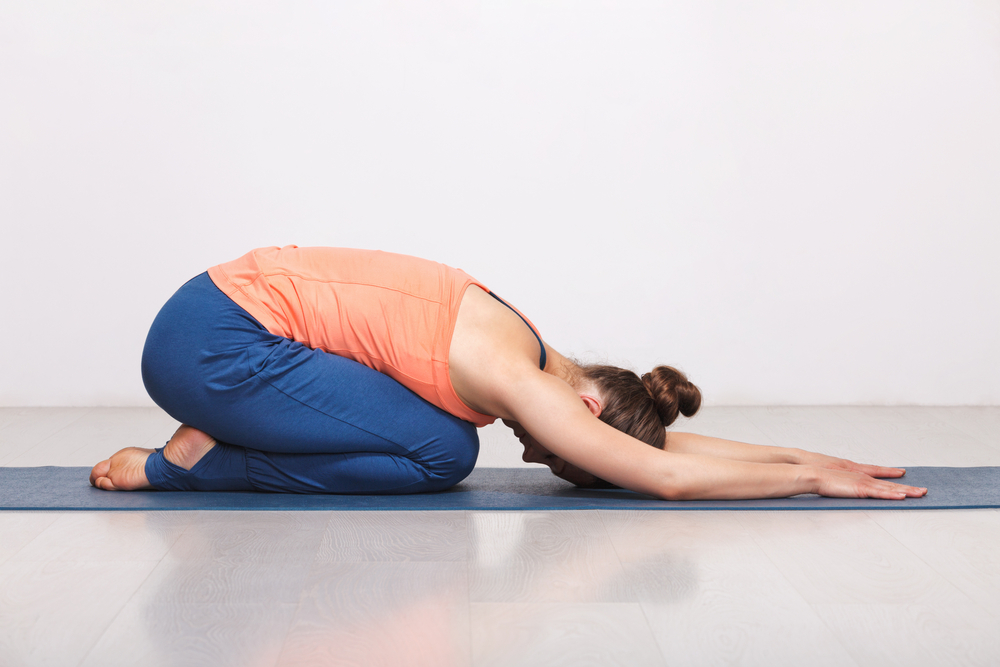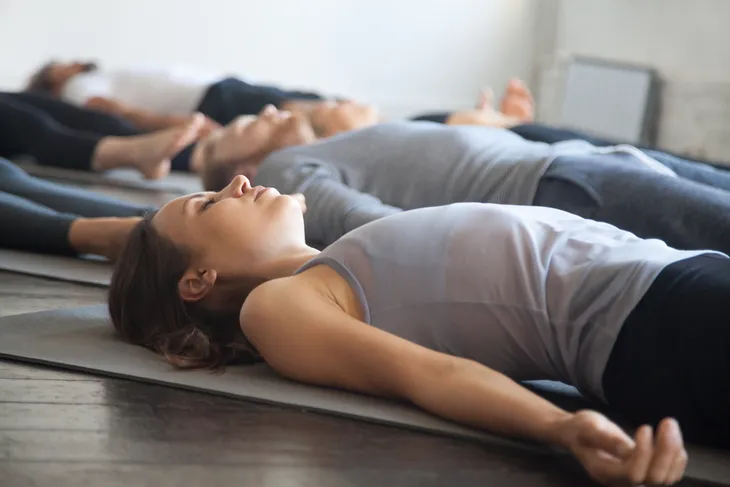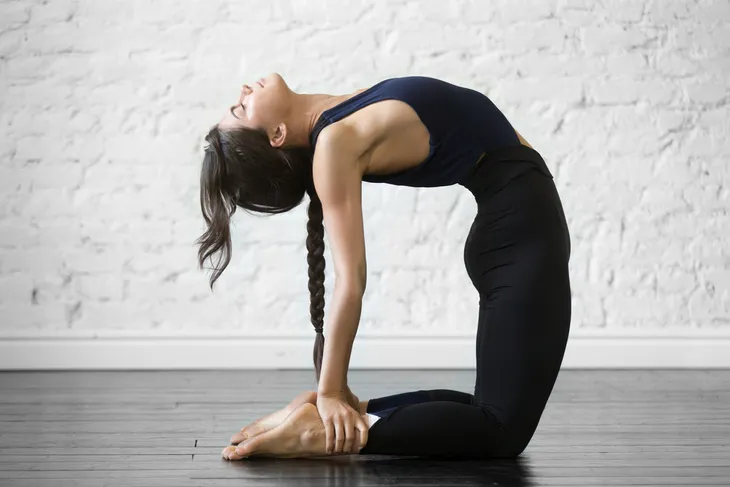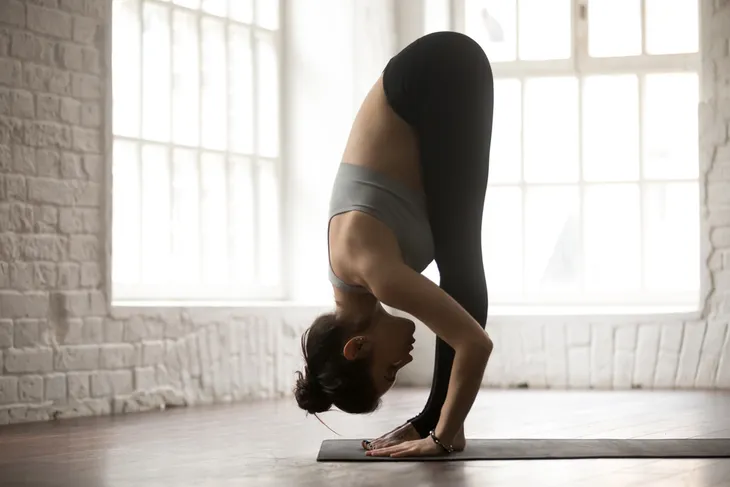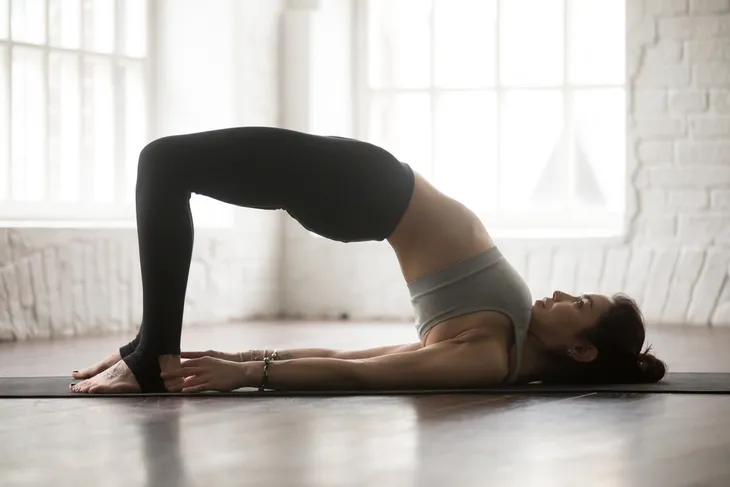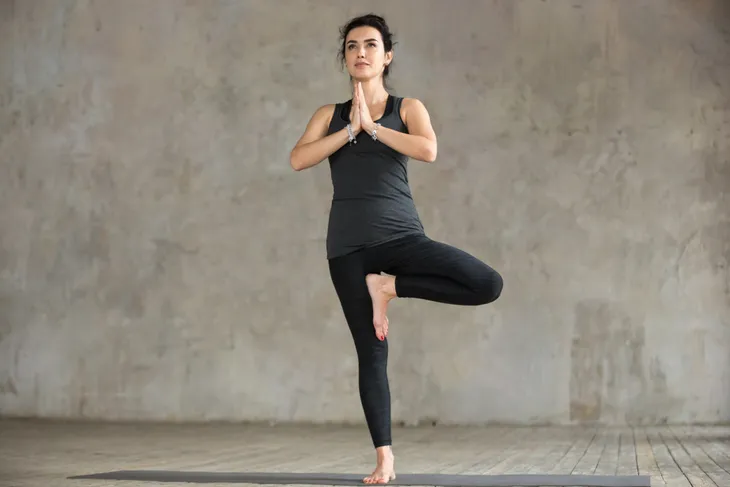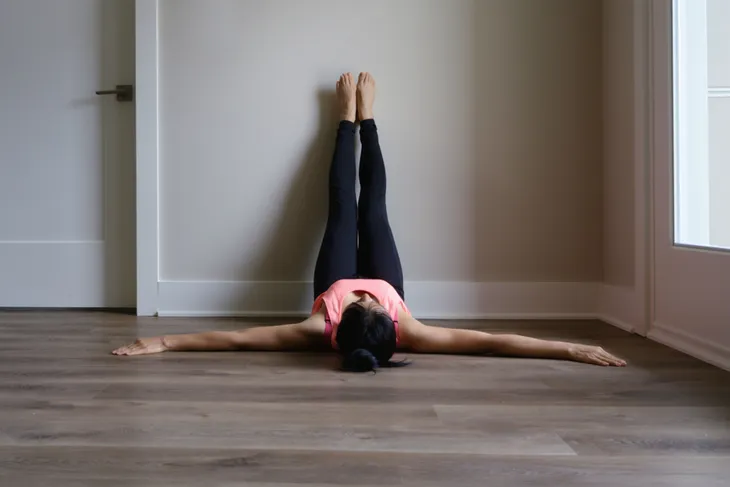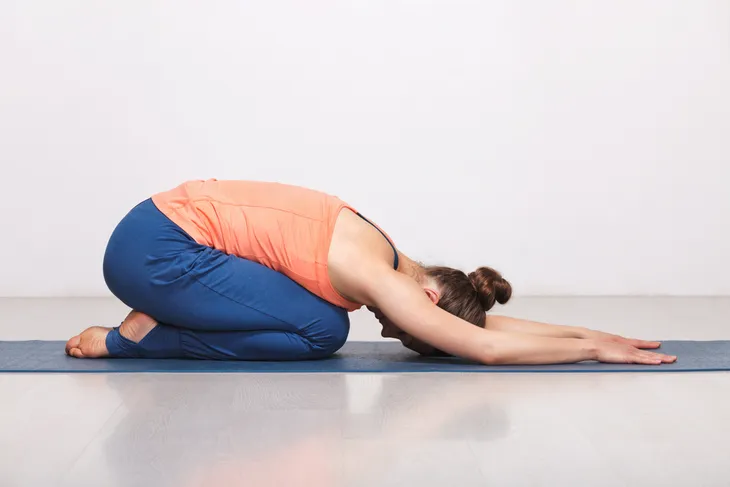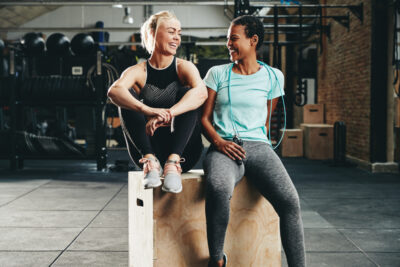Anxiety is more common than we would think. Millions of people suffer in silence with anxiety that can be life crippling at times. It can prevent you from important things in life, like pursuing your dreams, taking a flight, meeting new people, or giving a presentation at work.
Anxiety can even affect smaller aspects of everyday life, like getting on a bus, or just getting out of bed. It can make even the little things overwhelming, and wreak havoc on your mind, body, immune system and sleep cycles. Now let’s get ready to curb that anxiety, with asana…
Corpse Pose
At the end of your practice, or anytime you are feeling overwhelmed, lie down in corpse pose. This pose is the ultimate aid in relaxation and stress relief. It eases the body into a state of rest and ease. Corpse pose aids in promoting healthy sleep patterns, calming the nervous system, and lowering blood pressure.
Use a cushion or pillow for support under your head if desired, keep a blanket nearby in case you get a little cool as you start to unwind after your yoga practice. Stay here for 10-minutes if possible, breathing deeply and mindfully relax each part of your body from head to toe.
Camel Pose
This is a back bending posture with chest expanding properties, and while the name of it may sound odd, I guarantee you the outcome of practicing it, will be anything but. Camel pose has many blissful benefits, especially for respiratory issues, fatigue, anxiety, mild backache and menstrual discomfort.
This pose stretches the entire front of the body, opens up the chest, throat and heart, stimulates the abdominal organs and neck, and is great for strengthening back muscles. Come out of the camel slowly to avoid any possible lightheadedness, and follow with a forward fold like a child’s pose.
Standing Forward Bend
Forward folds, or bends, are fantastic for stress and anxiety reduction. These poses create a slight rush of blood to the head, which in turn calms our nervous system. While providing the release of the upper body, forward bends are a gentle inversion.
That they provide physical benefits such as: strengthening thighs and knees, stretching hips, hamstrings, and calves. Forward bends also help reduce headaches, fatigue, insomnia, stress and aid in digestion. It is always good to follow a backbend with a forward fold.
Bridge Pose
Bridge pose is a key yoga pose for stress and anxiety. It helps in stretching the muscles of the back and the legs, and is an effective workout for hips and thighs.
In addition, it will also help in controlling high blood pressure, reducing backaches, headaches, sleep disorders and fatigue. This pose is energizing, rejuvenating and restorative. A simple asana, loaded with benefits.
Tree Pose
Practicing basic standing poses is excellent for concentration, focus and balance. When you are experiencing anxiety, this pose can help refocus your attention onto your body, and breath, as opposed to your mind, which is busy causing your grief.
Tree pose is another posture you can do anywhere, in the kitchen, a line up, lunchroom or somewhere peaceful and quiet. If you have a deck with a nice view, a serene backyard set up, or live close by to a beautiful park or river, go get your tree on.
Legs Up the Wall
Legs up the wall is a great pose for relieving lower back pain, and easing anxiety symptoms. In addition to also relieving arthritis discomfort, menstrual cramps, reducing insomnia, and lowering high blood pressure.
This pose is often used in restorative yoga classes, and is easily done at home, the office, the airport—or anywhere you can find a wall. If you can find a place that is quiet, or calming to gain the full effect, that is ideal. If you experience any discomfort in the lower back or buttocks, roll up a blanket and place it underneath that area for support.
Child’s Pose
This is a pose of peace and rest. Child’s pose is often used in between asanas in class to take a breather. It is a calming and easy pose that can be done just about anywhere, and great for alleviating anxiety.
Child’s pose helps to relieve tension in the back, neck, and shoulders. These are areas where most people hold a lot of tension and stress. This will also help to promote relaxation by encouraging steady breathing, and is especially beneficial for anxiety sufferers as it calms the nervous system.
